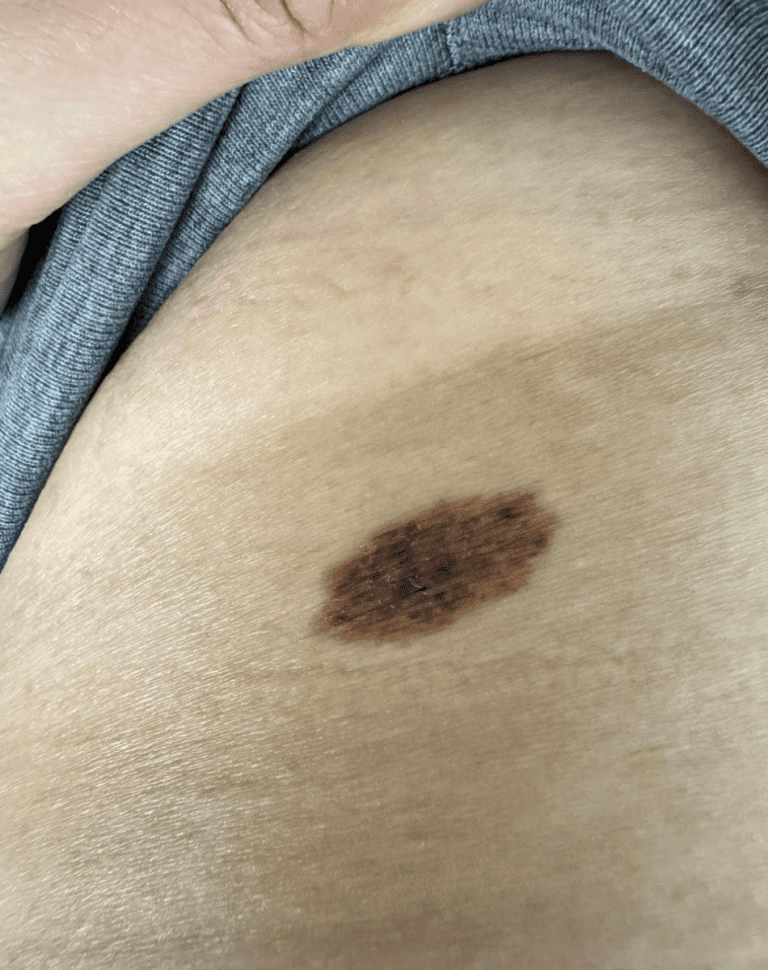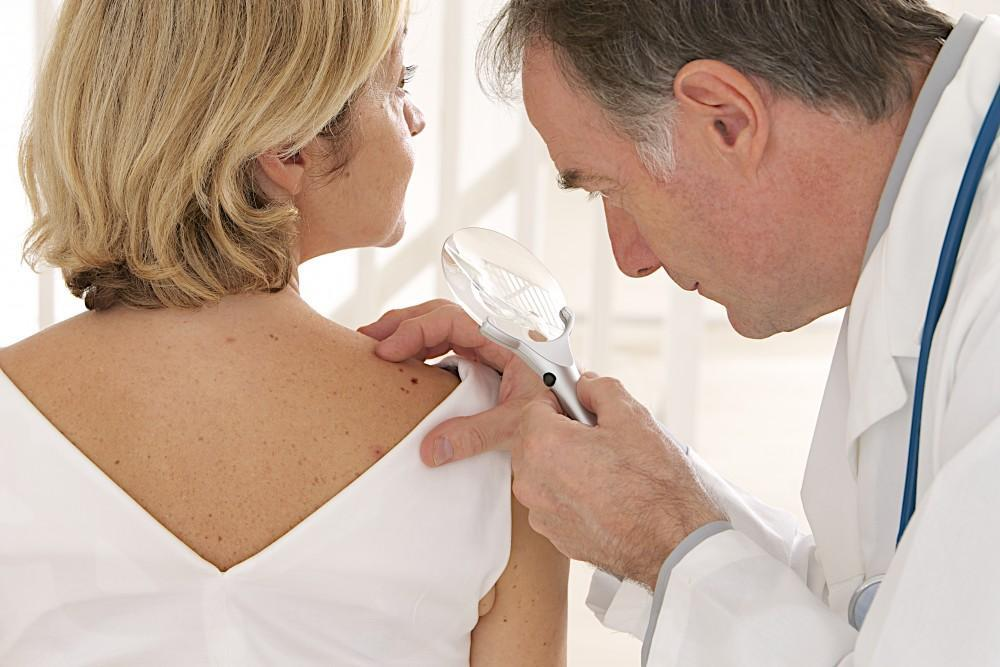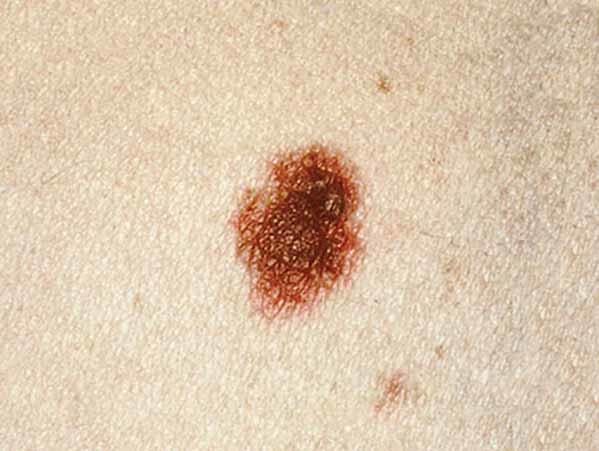A mole with patchy dark spots can be unsettling, as it might indicate an underlying health concern, including the potential for skin cancer. Early detection is crucial for effective treatment, so it’s essential to be informed about what signs to look out for, how to monitor changes in your moles, and when to seek medical advice. By understanding what constitutes a concerning mole, you can take proactive steps to protect your skin health and alleviate any anxieties you may have.
Recognizing the Signs: The ABCDEs of Moles

When evaluating a mole, especially one with irregular color or patchy dark spots, dermatologists recommend using the ABCDE method. This easy-to-remember checklist covers the most common indicators of atypical moles, including those that might require further medical evaluation.
A – Asymmetry
A normal mole is typically symmetrical, meaning if you draw a line down the center, both halves will match. However, if one half of the mole does not resemble the other, it could be a sign that the mole is atypical or irregular. Asymmetry is often one of the earliest signs of a potentially dangerous mole, such as melanoma.
B – Border
Take a close look at the edges of the mole. A typical mole has smooth, even borders, while an irregular mole may have jagged, blurred, or uneven edges. If the border of your mole appears ragged or irregular, it’s worth mentioning to a healthcare professional during a skin check.
C – Color
Normal moles are usually a single, even color—often brown or tan. If you notice multiple colors within one mole, such as varying shades of brown, black, or even hints of red, blue, or white, it may signal an irregularity. Patchy dark spots and varied pigmentation are common signs of abnormal moles.
D – Diameter
While not all large moles are problematic, size can be an indicator. A mole larger than 6 millimeters in diameter (about the size of a pencil eraser) should be observed carefully. Melanomas can develop at smaller sizes too, but larger moles are often worth checking out.
E – Evolving
One of the most telling signs of a potentially harmful mole is change. If a mole changes in size, shape, or color, or if it begins to itch, bleed, or become tender, it’s important to consult a dermatologist. The evolution of a mole can indicate that something is wrong and should not be ignored.
When to See a Doctor: Identifying Warning Signs
While not all unusual moles are cancerous, it’s essential to consult a doctor if you notice certain symptoms. Here are some red flags that signal it’s time to make an appointment with a dermatologist:
- Pain or Discomfort: If the mole is tender, itchy, or painful, it’s a good idea to have it checked.
- Oozing, Bleeding, or Crusting: A mole that starts oozing or bleeding, or becomes crusty, could be a sign of an underlying issue.
- New Moles After Age 20: Although it’s common to develop new moles up to early adulthood, new moles after the age of 20 could indicate a need for further examination.
- Odd Appearance Compared to Other Moles: If one mole stands out from others (this is sometimes called the “ugly duckling” sign), it’s worth getting it evaluated.
Seeking medical advice at the first sign of any of these symptoms is crucial, as early intervention often leads to better outcomes.

Preventative Measures: Taking Control of Your Skin Health
Taking a proactive approach to skin care can help you catch potential issues early and keep your skin healthy. Here are some key strategies for maintaining skin health and monitoring moles:
1. Perform Monthly Self-Examinations
Regular self-checks are an essential part of skin care. Make it a habit to examine your skin once a month, looking for any new moles or changes to existing ones. Full-length mirrors and handheld mirrors can help you view hard-to-see areas like your back and scalp. If you’re unsure what to look for, refer to the ABCDE method.
2. Schedule Annual Dermatologist Check-Ups
In addition to self-checks, an annual visit to a dermatologist is recommended, especially if you have a history of sun exposure, a family history of skin cancer, or a lot of moles. Dermatologists have tools to perform thorough skin checks, identifying potential problems that might be difficult to spot on your own.

3. Practice Sun Safety
Ultraviolet (UV) rays from the sun are a major cause of skin damage, which can lead to abnormal moles and skin cancer. Protecting your skin from the sun is one of the best ways to maintain skin health:
- Use a Broad-Spectrum Sunscreen: Look for a sunscreen with SPF 30 or higher, and apply it 15 minutes before sun exposure.
- Wear Protective Clothing: Long sleeves, wide-brimmed hats, and sunglasses offer additional protection from harmful rays.
- Avoid Peak Sun Hours: The sun is strongest between 10 a.m. and 4 p.m., so try to stay in the shade during these hours.
4. Keep a Photographic Record of Your Moles
Taking photos of your moles can help you track changes over time. This can be especially helpful for large or unusual moles. If you notice any changes in size, shape, or color when comparing photos, make an appointment with your dermatologist.
Understanding the Risks: The Importance of Early Detection

Skin cancer, particularly melanoma, can be aggressive if left untreated. Early detection significantly improves the chances of successful treatment, so it’s essential to keep an eye on your skin’s appearance and act quickly if something doesn’t look right. Being mindful of changes, seeking regular skin checks, and protecting your skin from sun exposure can all play a critical role in maintaining healthy skin.
Conclusion: Stay Vigilant and Protect Your Skin
Noticing a mole with patchy dark spots can be alarming, but by knowing what to look for and taking proactive steps, you can safeguard your skin health. Use the ABCDE method to monitor moles, seek medical advice when you notice unusual changes, and make sun safety a priority in your routine. With regular checks and smart practices, you can take charge of your skin health, catching potential issues early and maintaining peace of mind.
Your skin is your body’s largest organ—give it the care and attention it deserves. Stay informed, stay protected, and make your skin health a top priority.